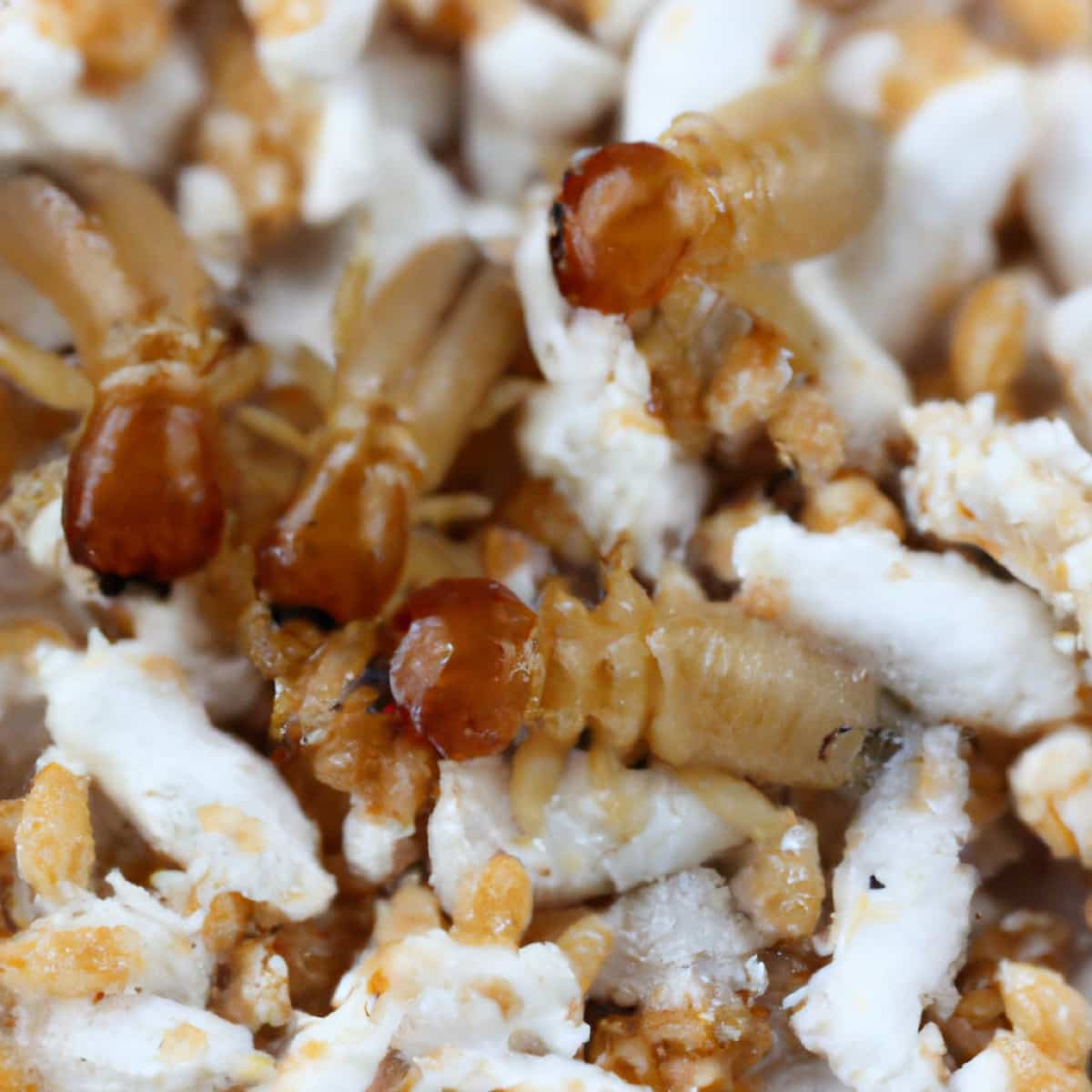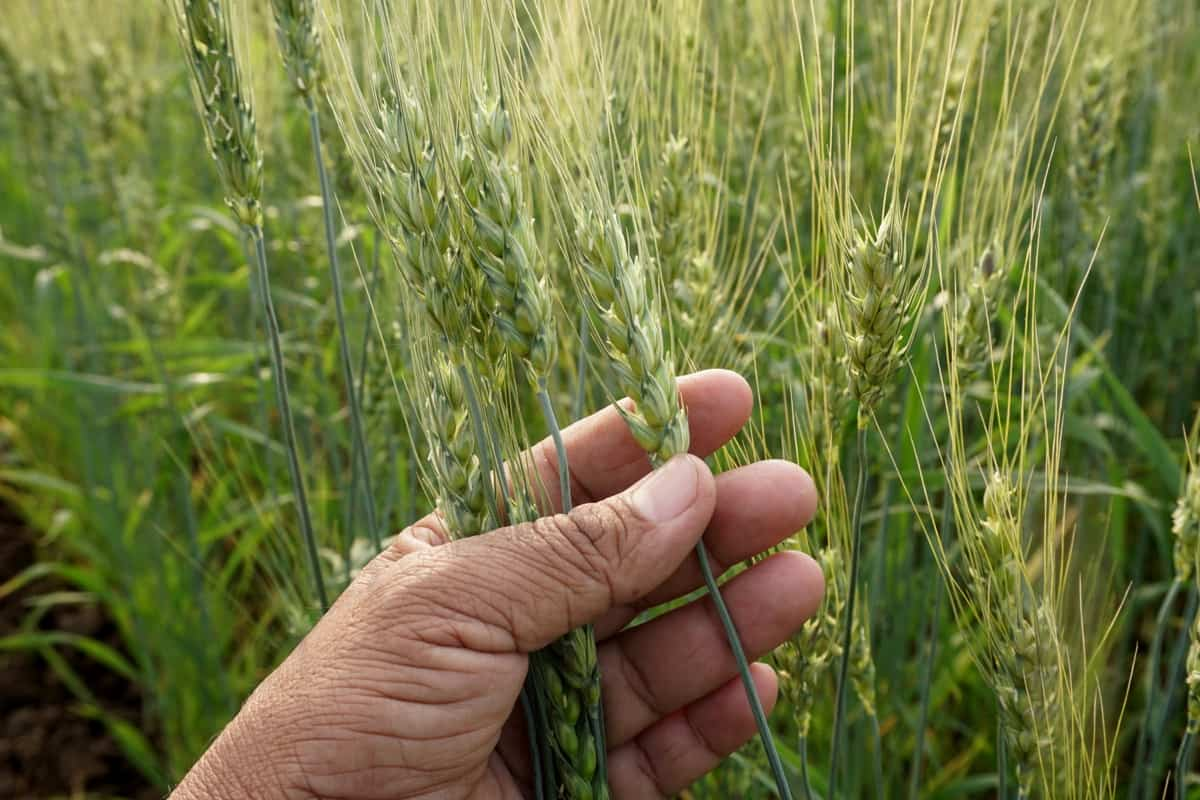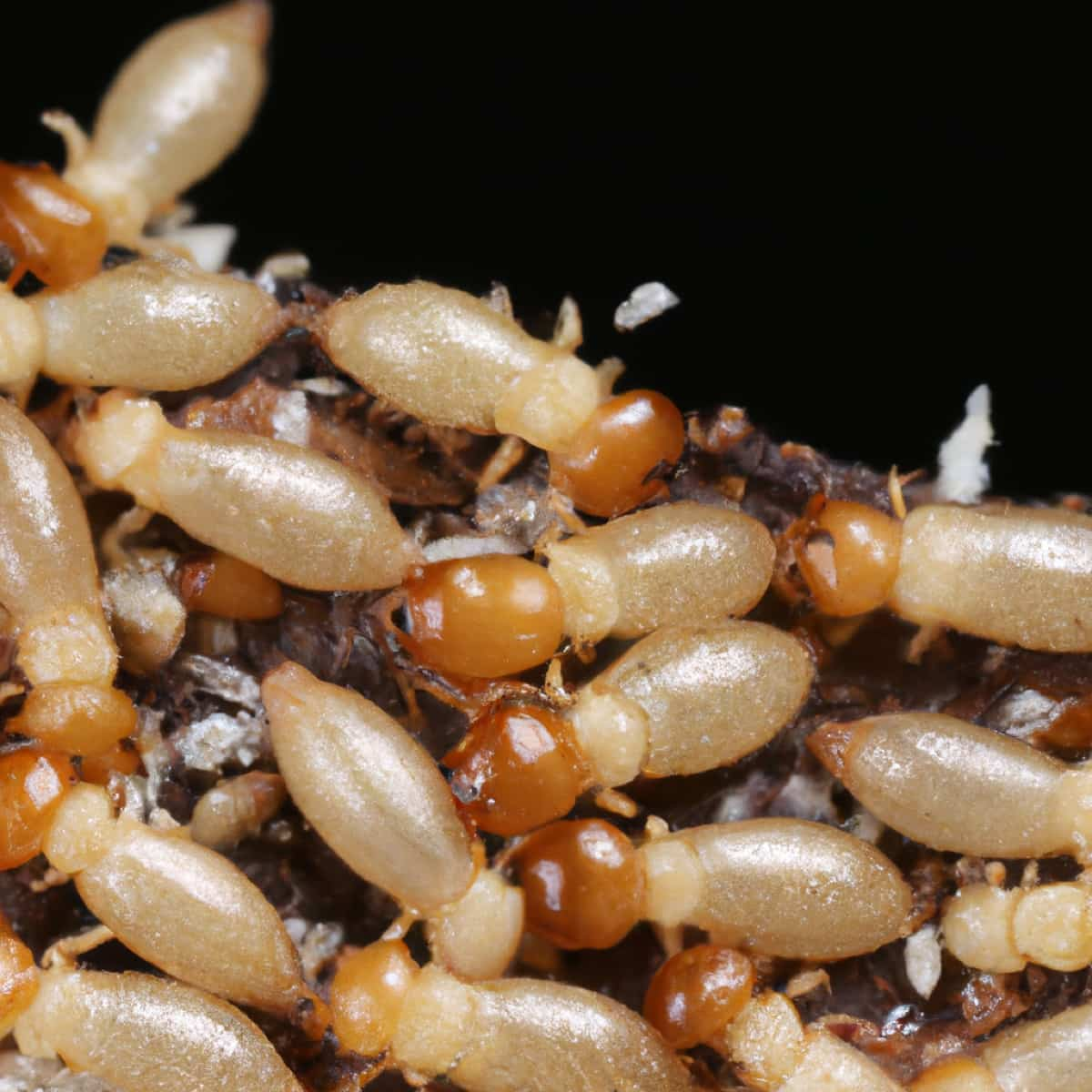Wheat Termites, Microtermes obesi are one of the most damaging pests of wheat fields worldwide, belonging to the Family Termitidae of the Order Isoptera. Termites feed on organic matter, including wheat plants’ roots, stems, leaves, and grains. They can quickly destroy a field, leaving behind large patches of dead and dying plants. The most common type of termite in wheat fields is the soil-dwelling subterranean termite.

These termites live in the soil, feeding on organic matter found there. They are particularly attracted to the roots of wheat plants, which they can easily access by tunneling through the soil. Subterranean termites can quickly spread throughout a field, causing extensive damage. Other types of termites, such as dry wood and damp wood termites, are also found in wheat fields.
To effectively manage this pest, it is important to understand its life cycle, its preferred habitats, and the best methods for controlling it. This article will provide an overview and discussion of the Termites Pest in wheat crops, including its symptoms, identification techniques, and control.
Wheat Termites Pest Management in Wheat
Life Cycle of Termites Pest in Wheat Crop
Egg: The egg stage is the first stage of the termite life cycle. In this stage, the female termite will lay her eggs in a moist, protected area, usually in soil or a rotting log. The eggs take about two weeks to hatch.
Nymph: The nymph stage is the second stage of the termite life cycle. After hatching from their eggs, the termites will enter the nymph stage. During this stage, the termites will feed on the plant material around them, such as the leaves and stems of the wheat crop. They will also molt up to 10 times before reaching their adult stage.
Adult: The adult stage is the third stage of the termite life cycle. During this stage, the adult termites will feed on the woody parts of the wheat crop, such as the stems and roots. They will also form colonies and create tunnels in the soil to protect themselves from predators.
Reproductive: The reproductive stage is the fourth and final stage of the termite life cycle. During this stage, the reproductive termites will mate and lay their eggs in the same moist, protected area. The eggs will then hatch, and the cycle will start again. Overall, termites have a life cycle closely linked to the wheat crop they are infesting.
Occurrence of Termites Pest in Wheat Field
- Location of Wheat Termite: Wheat termite is a major pest of wheat in India, the USA, Canada, Mexico, Cuba, France, Italy, China, Brazil, Australia, and Africa.
- Host Range: Wheat termites feed on the starch and other components of wheat, rice, millets, oats, barley, rye, corn, sorghum, and other grains. They can also feed on grasses, weeds, and other plants.
Factors Favoring Population Increase of Termites Pest in Wheat Fields
- Availability of food sources – Termites are attracted to wheat fields because they provide an abundant source of food, mainly the cellulose found in the stems, leaves, and roots of the wheat plants.
- Soil moisture – Termites need moisture to survive and reproduce, and moist soil provides an ideal environment for them to do so.
- Shelter – Termites build nests and colonies to protect themselves from predators. If there is a large amount of vegetation in the field, it can serve as a shelter for termites.
- Presence of predators – If the wheat field is not populated with predators such as birds, rodents, and other insects, it can provide an ideal environment for termites to thrive and multiply.
In case you missed it: Wheat Aphids Management in Wheat: Symptoms, Treatment, Chemical, Biological, Natural, and Organic Control

Identification of Termites Pest in Wheat Field
- Egg: The eggs are small and pearl-shaped.
- Larva: Nymphs are lighter in color and have a soft outer shell.
- Adult: Adult termites are typically dark brown or black and have a hard outer shell. These insects show a resemblance to ants with dark-colored heads.
Damage Symptoms of Termites Pest in Wheat Field
- Adult termites are typically responsible for the most significant damage, as they feed on the stems and leaves of the plants.
- Nymphs can also cause damage, as they feed on the roots and underground parts of the plants.
- Shortly after planting and occasionally as the wheat is almost fully mature, termites cause harm. They consume the cellulose inside the roots, stems, and sometimes even dead plant cells as food.
- The destroyed crops fully dry out and can be removed with ease. Plants that have been victimized eventually develop white ears.
- Non-irrigated areas and farms where FYM is spread before planting will experience heavy infestations.
- Frass is the termite droppings seen in and around the field. These droppings are small, black pellets, which can indicate an infestation.
Percentage of Yield Lose in Wheat due to Termites Pest
Generally, In India, the average yield loss caused by termites is estimated to be around 15-20%, while in China, the yield loss is around 10%. In the United States, termite yield loss is estimated to be around 5%. In Australia, termite yield loss is estimated at around 3-5%. In Africa, the yield loss caused by termites is estimated to be around 20-30%. In some cases, the yield loss can be as high as 50%.
Cultural Control of Termites Pest in Wheatfield
- Crop rotation – This involves alternating the wheat crop with other non-host crops such as corn, sorghum, millet, and soybeans which are less attractive to termites.
- Tillage – It involves the mechanical manipulation of the soil to disrupt the termite’s habitat, making it difficult for them to survive. This includes plowing, harrowing, and other mechanical means of soil disruption.
- Sanitation – Reduce the availability of food sources and the number of hiding places for termites by removing dead wood, stumps, and other debris from the wheat field.
- Trapping – This involves setting up either baited or un-baited boxes that contain an attractant to lure the termites in.
- Humidity – Reduce the humidity of the field by avoiding overwatering and ensuring adequate drainage in the field.
Biological Control of Termites Pest in Wheatfield
- Natural predators of termites commonly include ants, beetles, spiders, wasps, and certain birds.
- A variety of parasites like nematodes and pathogens like bacteria, fungi, and viruses can be used to infect and kill termites. These microbes can be applied directly to the soil’s surface or sprayed.
Chemical Control of Termites Pest in Wheatfield
- Pesticides, including active ingredients bifenthrin, permethrin, and pyrethrins, may be applied as a liquid or granular form to the soil or using a sprayer to treat the field.
- Soil application – Mix 2.5 L of Endosulfan 35 EC in 5 L of water with 50 kg of soil and disperse it by broadcasting application method.
- Seed treatment – Treat the seeds with 7.5 ml of Endosulfan 35 EC or 4.5 ml of Chlorpyriphos 20EC per kg of seed.
Preventive Measures for Control of Termites Pest in Wheatfield
- Do not use raw cow dung in the field because of the higher chances of termite breeding in the dung.
- Apply 1.2 kg of Bivaria bassiana per acre of the field just before sowing.
- Practice proper sanitation measures to suppress the pest population.
- Apply at least 4.5 quintals of neem cake for 1 acre of land to reduce the pest population.
- High-density sowing – Sow higher seed rates to compensate for the damage caused by termites and perform the thinning operation on the surviving crop.
In case you missed it: Wheat Armyworm Management in Wheat: Symptoms, Treatment, Chemical, Biological, Natural, and Organic Control

Conclusion
The termite pest of the wheat crop is a major issue in farming, especially in regions where this type of pest is prevalent. The infestation of termites can reduce crop yield, cause serious economic losses, and increase the risk of other pest infestations.
To prevent termite infestations, farmers should practice proper crop rotation and use suitable pest management practices such as applying insecticides, using baits and traps, and using physical barriers. Additionally, farmers should monitor their fields for signs of any termite activity, as early detection and treatment can help reduce the infestation’s severity. By taking proactive steps, farmers can protect their wheat crops from the threat of termite infestations.
- Beneficial Insects in Pest Management
- Natural Solutions for Pest Control in Flower Gardens
- Types of Fungicides Used in Agriculture
- Common Issues in the Fruit Development Stage of Pomegranate Farming
- Fruit Development Issues in Papaya: Easy Solutions and Treatment
- Soil-Borne Diseases and How to Protect Your Plants
- Practices to Prevent Disease Spread in the Garden
- From Wilted to Thriving: How to Treat Root Rot Naturally in Houseplants
- Natural Remedies to Cure Brown Spots on Fig Tree Leaves